Butterfly Tattoo with Flowers
A butterfly tattoo with flowers is a popular design choice that combines the beauty and symbolism of butterflies with the elegance of floral elements. Here’s a breakdown of its meaning and visual aspects:
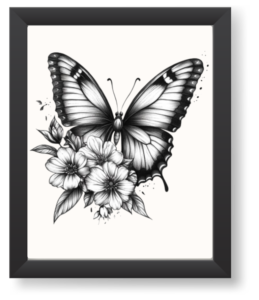
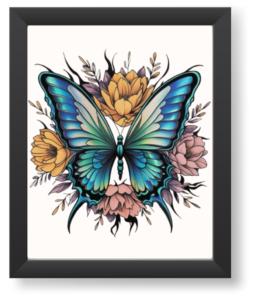
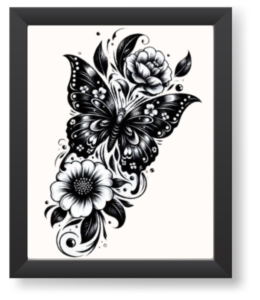
Symbolism:
- Butterfly:
- Transformation and Rebirth: Butterflies are often associated with personal growth, change, and metamorphosis, reflecting the stages of life and the emergence of beauty from struggle.
- Freedom and New Beginnings: The butterfly’s ability to fly freely symbolizes liberation and fresh starts.
- Delicacy and Grace: Butterflies are delicate creatures, representing grace, femininity, and a gentle spirit.
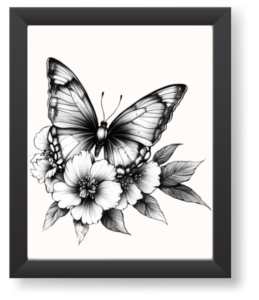
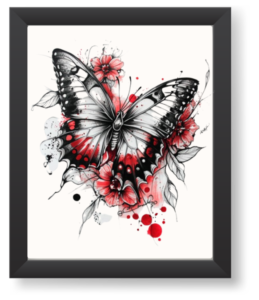
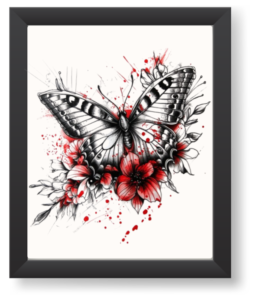
Flowers:
- Beauty and Nature: Flowers, especially when incorporated with butterflies, symbolize the beauty and harmony of nature.
- Growth and Life: Flowers are often used to symbolize growth, vitality, and the cycles of life, much like the butterfly’s transformative nature.
- Love and Femininity: Certain flowers, like roses, can symbolize love, while other blooms may carry different meanings (e.g., cherry blossoms for fleeting beauty, lilies for purity, etc.).
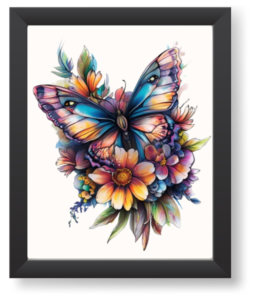
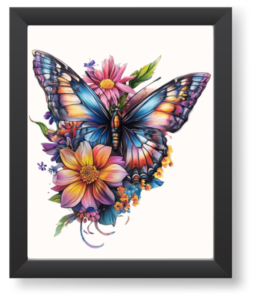
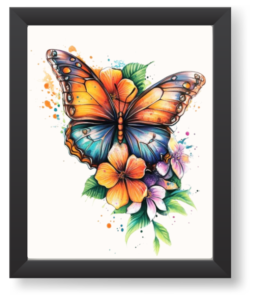
Design Elements:
- Placement: Butterfly and flower tattoos can be placed almost anywhere on the body, but common areas include the shoulder, back, arm, or ankle.
- Color: Vibrant colors are often used for both the butterfly and the flowers, reflecting their natural beauty. The butterfly may feature intricate wing patterns, while the flowers may range from roses to daisies, depending on the desired symbolism.
- Style: These tattoos can vary in style, from realistic depictions to abstract or watercolor effects. They can also be designed in black ink with detailed shading for a more minimalist, classic look.
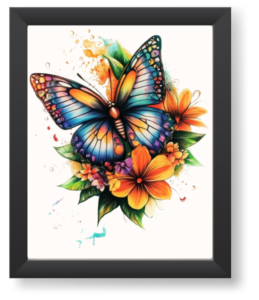
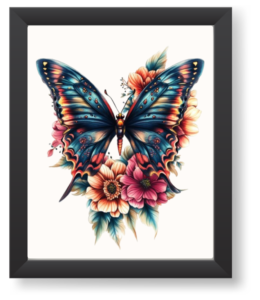
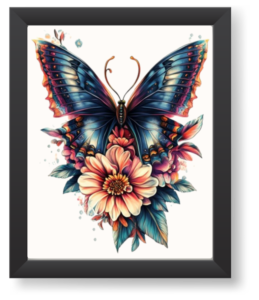
Popular Variations:
- Butterfly resting on a flower: This is a classic representation of the connection between the two symbols.
- Surrounding floral patterns: The butterfly may be framed or surrounded by floral patterns, creating a dynamic, flowing design that wraps around the body.
- Butterfly wings with floral motifs: In some designs, the butterfly’s wings are made up of floral patterns, merging the two elements into a single symbolic entity.
This combination is popular for its aesthetic appeal as well as its rich symbolic undertones, often chosen by those looking to reflect personal growth, change, or a love for nature.
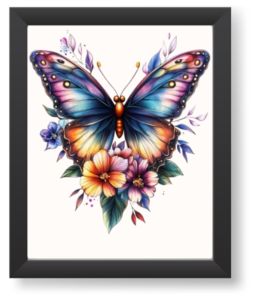
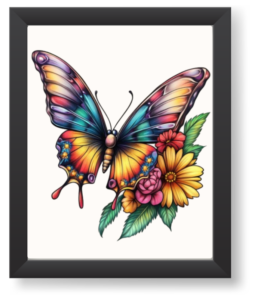
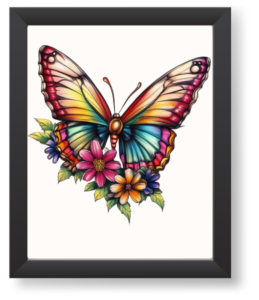
Placement Consideration
When deciding on the placement of a butterfly tattoo with flowers, several factors should be considered to ensure that the design complements both the chosen area of the body and the individual’s personal preferences. Here are some key placement considerations:
1. Size of the Tattoo
- Large Designs: If you envision a larger, more detailed design, areas like the back, thigh, upper arm, or side of the ribs offer plenty of space to incorporate both the butterfly and intricate floral elements.
- Smaller Designs: For smaller, more delicate designs, areas like the wrist, ankle, shoulder, or behind the ear are suitable for a subtler display of the tattoo.
2. Visibility
- High Visibility: If you want your tattoo to be visible most of the time, consider areas like the forearm, wrist, neck, or upper chest. These placements allow for the tattoo to be easily seen, which may be ideal for those who want their butterfly and flowers to be a personal or aesthetic statement.
- Low Visibility: If you prefer a more private or hidden tattoo, locations like the back, ribs, hips, thighs, or behind the ear offer a discreet option. These areas can be covered easily with clothing, providing the option to reveal the tattoo only when desired.
3. Body Shape and Curvature
- Curved Areas: Designs can be made to flow with the natural curves of the body. For example, a butterfly and floral design along the spine, ribs, or hip can emphasize the curves and create a dynamic, elongated look. Tattoos on the shoulder blades or chest can similarly align with the body’s natural shape.
- Flat Areas: Flat surfaces like the back, thigh, or calf provide a perfect canvas for more intricate, detailed designs, allowing the tattoo to maintain its clarity and precision.
4. Pain Sensitivity
- Less Painful Areas: If pain is a concern, areas with more flesh and muscle like the upper arm, thigh, shoulders, or calves tend to be less painful. These areas allow for a more comfortable tattooing experience, especially for larger designs.
- More Painful Areas: Areas with thinner skin or more bone, such as the ribs, ankles, wrists, spine, and behind the ear, can be more painful due to the lack of cushioning. However, these areas are popular for their aesthetic appeal and can create a striking visual impact.
5. Aging and Movement
- Static Areas: Consider areas of the body that are less likely to change significantly over time, especially if you want the tattoo to retain its original clarity. The upper back, thighs, and forearms generally experience less stretching or movement as the body ages.
- Dynamic Areas: Locations like the stomach, hips, chest, and inner arms may experience stretching over time, especially due to weight changes or aging. If you’re concerned about how the tattoo will age, choosing a more static area may be preferable.
6. Symmetry and Balance
- If your design is symmetrical (e.g., a butterfly with flowers on either side), consider central placements such as the spine, chest, or upper back. Symmetrical designs often look balanced and harmonious when placed in the center of the body.
- For asymmetrical designs, the tattoo can be placed to follow the contours of a particular area, such as along the collarbone, thigh, or side of the body, creating a more fluid, artistic appearance.
7. Design Flow and Movement
- For designs that are meant to look dynamic, such as a butterfly in flight surrounded by flowers, choosing a location where the design can “flow” across the body (e.g., side of the ribs, arm, or leg) can enhance the sense of motion and energy.
8. Tattoo Expansion
- If you think you might want to expand the design later (e.g., adding more flowers or other elements), choose an area with enough space to accommodate future additions. Areas like the back, arms, and thighs offer flexibility for building on your original design.
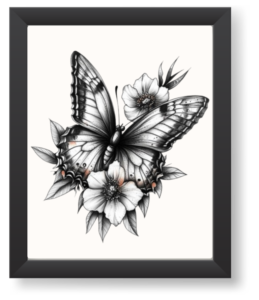
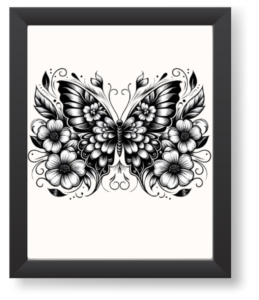
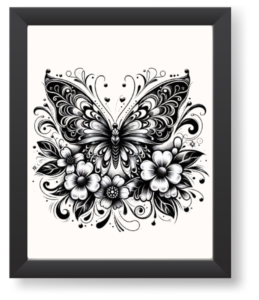
The ideal placement for a butterfly tattoo with flowers depends on a combination of personal aesthetic preferences, comfort with visibility, and how the tattoo will align with the body’s shape and movement. Carefully considering these factors will help ensure that the tattoo not only looks beautiful but also ages well and fits your lifestyle.
